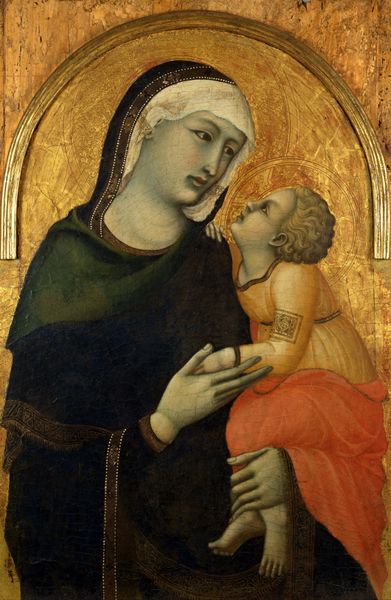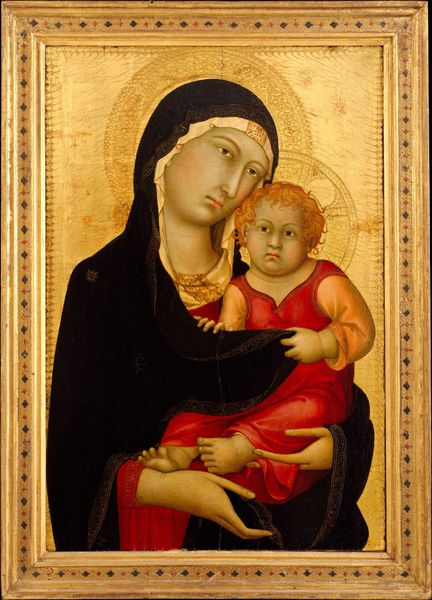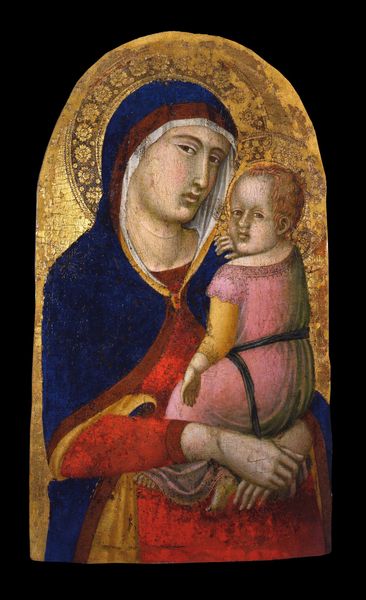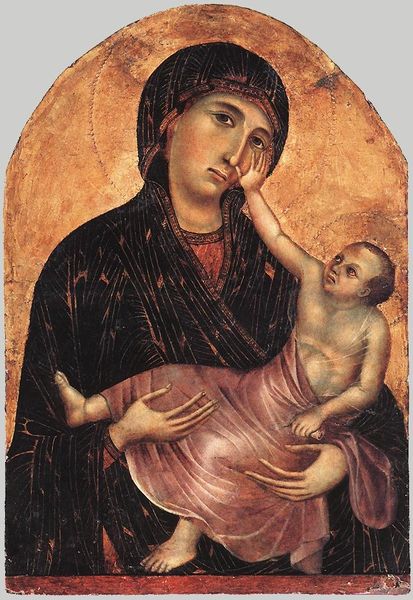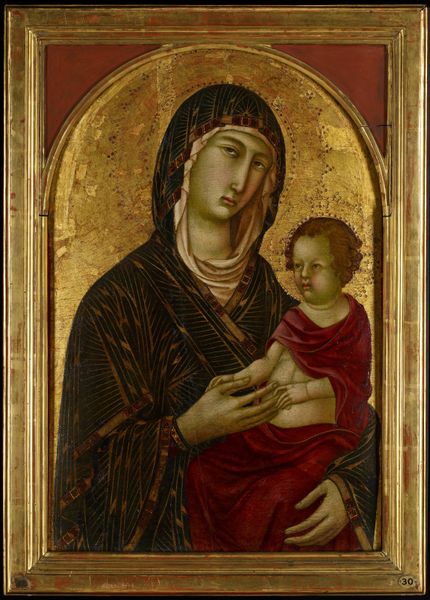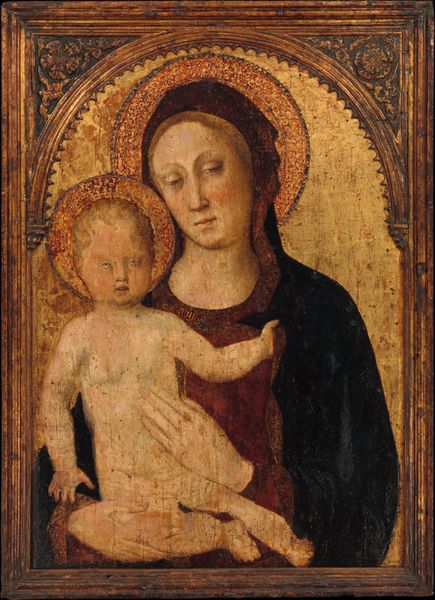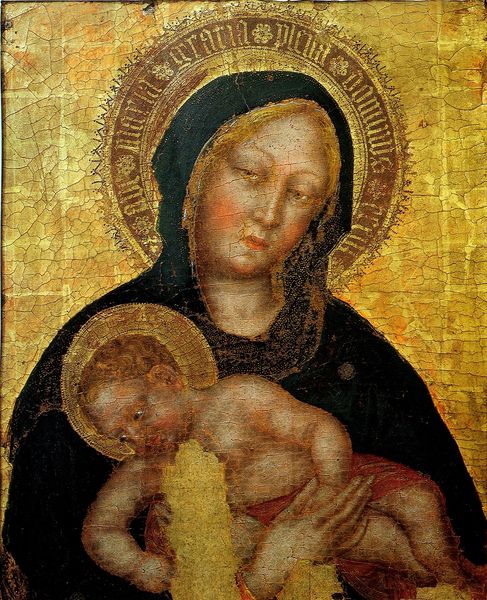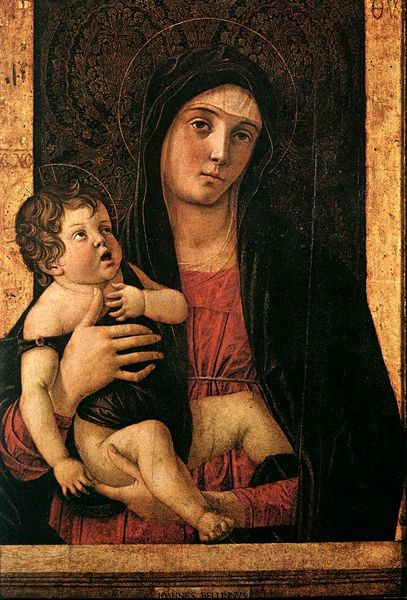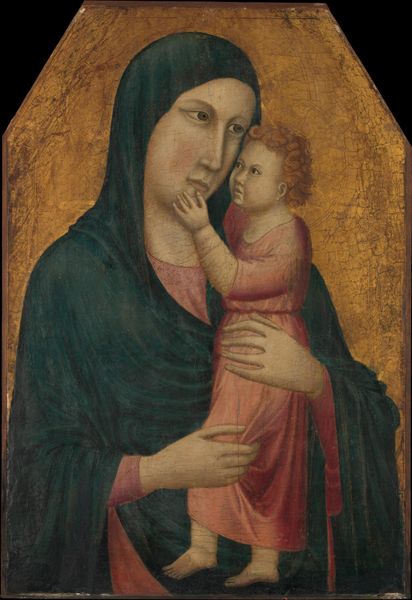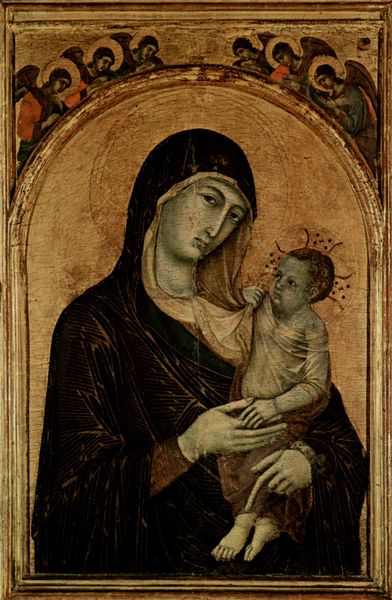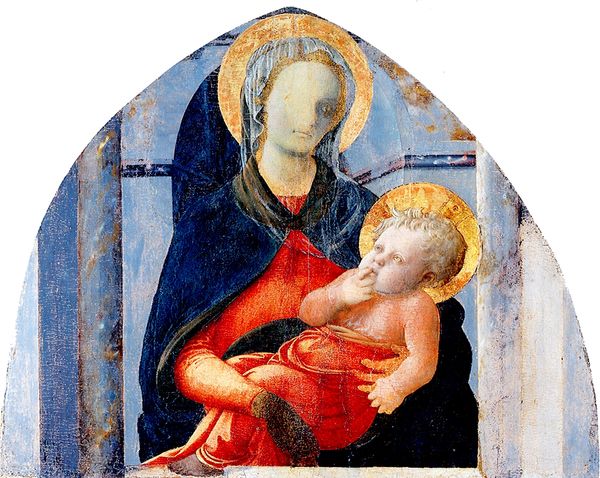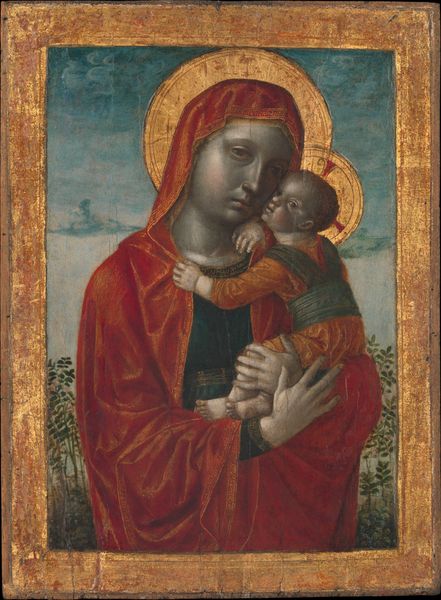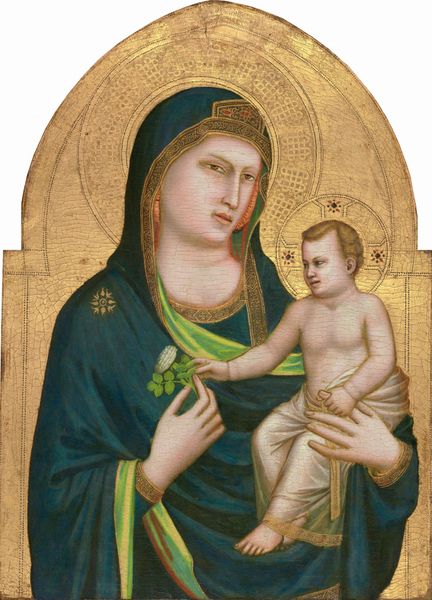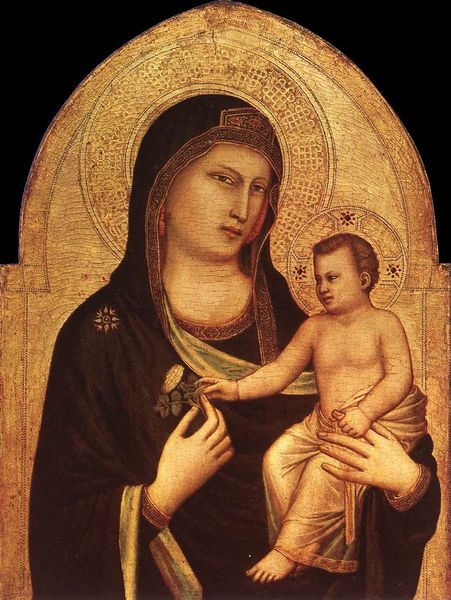
panel, tempera, painting
#
portrait
#
byzantine-art
#
medieval
#
panel
#
tempera
#
painting
#
figuration
#
oil painting
#
history-painting
#
italian-renaissance
#
portrait art
Dimensions: height 40 cm, width 41 cm
Copyright: Rijks Museum: Open Domain
This is a panel painting of the Virgin and Child, made by Meester van Badia a Isola. Observe the Virgin’s gesture, her hand raised in blessing. This is a motif as old as time. Think of the Orans pose in ancient Roman catacombs, figures with arms raised in supplication and benediction. This gesture transcends cultures, reappearing in Byzantine mosaics and Renaissance paintings alike. It speaks to a deep, primal human need for protection. The Virgin's solemn expression reflects a sense of sorrow that engages viewers on a subconscious level, drawing us into a shared experience of grief and empathy. This isn't just a painting; it's a vessel carrying centuries of collective memory. The blessing hand is not merely a religious symbol, but a psychological anchor. The image acts as a visual formula, or pathos formula, evoking both solace and a recognition of shared humanity. Its reappearance throughout history reminds us of the non-linear, cyclical progression of symbols, how they resurface and evolve.
Comments
rijksmuseum about 2 years ago
⋮
The style of the Master of Badia a Isola is closely related to that of Duccio, the founder of the Sienese school of painting. This Virgin is a variation on a prototype by Duccio. Although the bottom of the panel has been cut off, it is still an excellent example of the refined linear style that Duccio passed on to his followers in Siena.
Join the conversation
Join millions of artists and users on Artera today and experience the ultimate creative platform.
